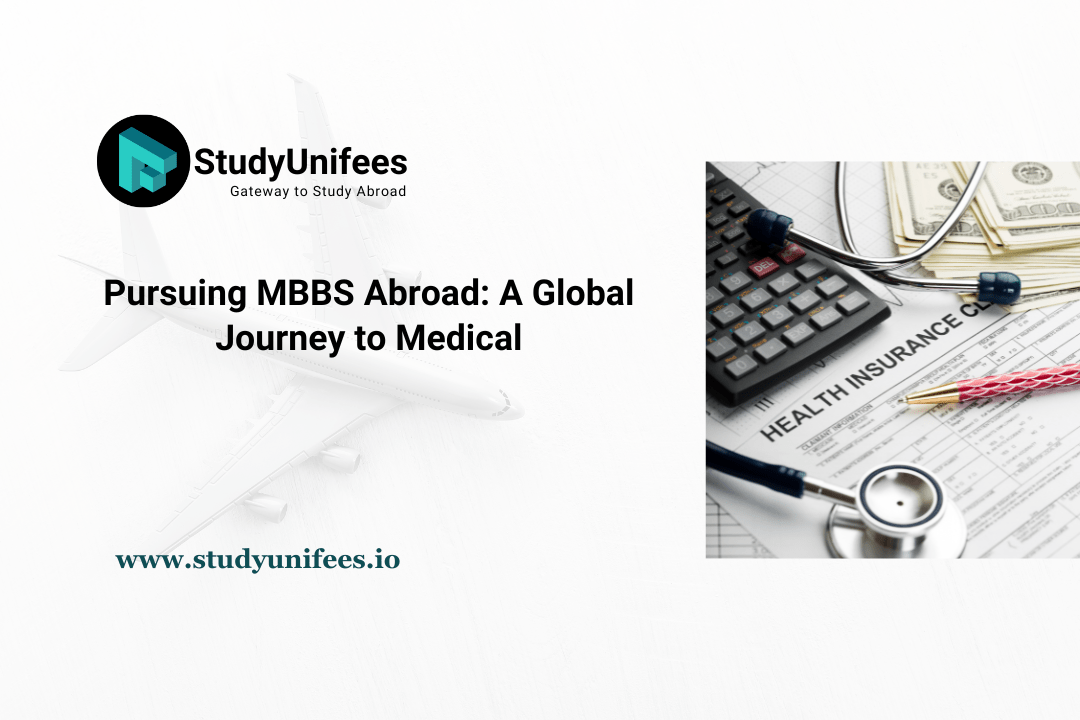Embarking on the journey of pursuing an MBBS abroad opens a world of opportunities and experiences for aspiring medical professionals. This blog post delves into the specifics of studying MBBS in various countries and the prospects for Indian students seeking MBBS abroad in neighbouring regions. We also explore the pathway to licensure for MBBS graduates from foreign universities who wish to practice in India.

MBBS in the USA
Studying MBBS in the USA, known as MD (Doctor of Medicine), involves a rigorous structure that starts with a pre-medical undergraduate degree, followed by a 4-year medical program. The total duration often extends to around 7-8 years, including internships and residencies. The cost of studying MBBS in the USA is quite high, averaging around $200,000 – $300,000 for the entire course. Clinical rotations are integral, providing hands-on experience in various medical fields.
MBBS in Canada
Canada offers an MD program similar to the USA. The course duration is typically four years post a bachelor’s degree. However, gaining admission to MBBS in Canada is highly competitive. The average cost ranges from CAD 20,000 to CAD 80,000 per year. Clinical rotations form an essential part of the curriculum, offering practical exposure.
MBBS in the UK
In the UK, the MBBS program is typically 5-6 years. It blends theoretical knowledge with practical training right from the early years. The cost of MBBS in the UK for international students can range between £22,000 and £52,000 annually. The course includes mandatory internships, providing critical hands-on experience.
MBBS in the Republic of Ireland
Ireland offers a 5-—to 6-year MBBS program, with an emphasis on early patient contact and clinical internships. International students’ costs vary between €45,000 and €55,000 per year. The program is recognized for its comprehensive clinical training.
MBBS in Germany
MBBS in Germany, or ‘Medizin’, is highly acclaimed, lasting six years and three months, including a mandatory 1-year internship. The program is primarily tuition-free in public universities, with students only required to pay nominal semester fees. The curriculum is rigorous, with a strong emphasis on clinical practice.
MBBS in Australia
Australian universities offer MBBS as either a 5-6 year undergraduate program or a 4-year graduate program (MD). The cost ranges from AUD 255,000 to AUD 630,000 for the entire course. Internships are compulsory, providing practical experience in various healthcare settings.
MBBS in New Zealand
In New Zealand, the MBBS course, known as the MBChB, is a 6-year program including internships. The cost for international students is around NZD 70,000 to NZD 80,000 per year. The program integrates practical training extensively throughout the course.
MBBS Abroad for Indian Students in Nepal, Bangladesh, and Central Asian Republics
Many Indian students opt for MBBS abroad in neighboring countries like Nepal and Bangladesh and Central Asian countries like Kazakhstan, Kyrgyzstan, and Uzbekistan. These regions offer affordable MBBS programs, costing around $3,000 to $8,000 annually. The course structure is similar to India, generally spanning 5-6 years including internships. However, the medium of instruction and the quality of medical education can vary significantly. Licensure for MBBS Graduates from Foreign Universities in India MBBS graduates from foreign universities who wish to practice in India must clear the Foreign Medical Graduate Examination (FMGE). The exam assesses the candidate’s understanding of basic concepts and ability to apply medical knowledge. The National Medical Commission (NMC) FMGE was recently replaced with the National Exit Test (NEXT) to standardize the assessment process. Successful candidates must complete a mandatory internship in India to be eligible for registration with the NMC.
Pursuing an MBBS abroad offers an enriching journey through diverse healthcare systems, advanced medical education, and a chance to experience different cultures. While the journey is challenging and requires significant financial investment, the global exposure and learning it brings are unparalleled. Each country has its unique structure, costs, and internship opportunities that mold students into competent professionals. For Indian students, understanding the licensure process is crucial to seamlessly integrate their foreign medical education with the requirements of practicing in India. MBBS abroad is not just about gaining a degree; it’s about embracing global medical excellence and bringing those skills and experiences back home.
20 Advantages of studying an MBBS abroad for Indian students
- Global Exposure: MBBS abroad exposes Indian students to diverse healthcare systems and practices.
- Advanced Curriculum: Many foreign medical schools have a more advanced and research-oriented curriculum than their Indian counterparts.
- Modern Facilities: Universities abroad often have state-of-the-art facilities and equipment, providing a better learning environment.
- International Networking: Students gain opportunities to network with peers and professionals worldwide.
- Exposure to Diverse Patient Demographics: Studying abroad allows medical students to interact with a diverse patient population, enhancing their clinical skills.
- Language Skills: Living and studying in a foreign country improves language skills, especially in English, which is a global medical language.
- Cultural Competence: Exposure to different cultures makes students more culturally sensitive, a valuable trait in healthcare professionals.
- Improved Employment Prospects: A degree from a reputed international university can enhance employment prospects in India and abroad.
- Research Opportunities: There are often more opportunities for research and publishing in international academic settings.
- Learning from Renowned Faculty: Many foreign medical schools have renowned faculty members, providing an excellent learning opportunity.
- Personal Growth: Living abroad independently fosters personal growth and maturity.
- Quality Clinical Rotations: International medical programs often offer high-quality clinical rotations in well-equipped hospitals.
- No Entrance Exam Pressure: Bypassing the highly competitive entrance exams for medical schools in India can be a significant relief.
- Opportunity to Travel: Studying abroad offers the opportunity to explore new countries and cultures.
- Learning New Medical Practices: Exposure to different healthcare systems and medical practices broadens a student’s medical perspective.
- International Standards of Education: MBBS programs abroad often adhere to international standards, ensuring a high level of medical education.
- Better Student-to-Teacher Ratio: Many international medical schools offer a more favorable student-to-teacher ratio than Indian medical colleges.
- Developing a Global Perspective: Living and studying abroad develops a global outlook that benefits the increasingly connected world.
- Exposure to Advanced Technologies: Students get hands-on experience with advanced medical technologies not widely used in India.
- Opportunity for Permanent Residency: Studying in some countries can lead to permanent residency and work opportunities.

